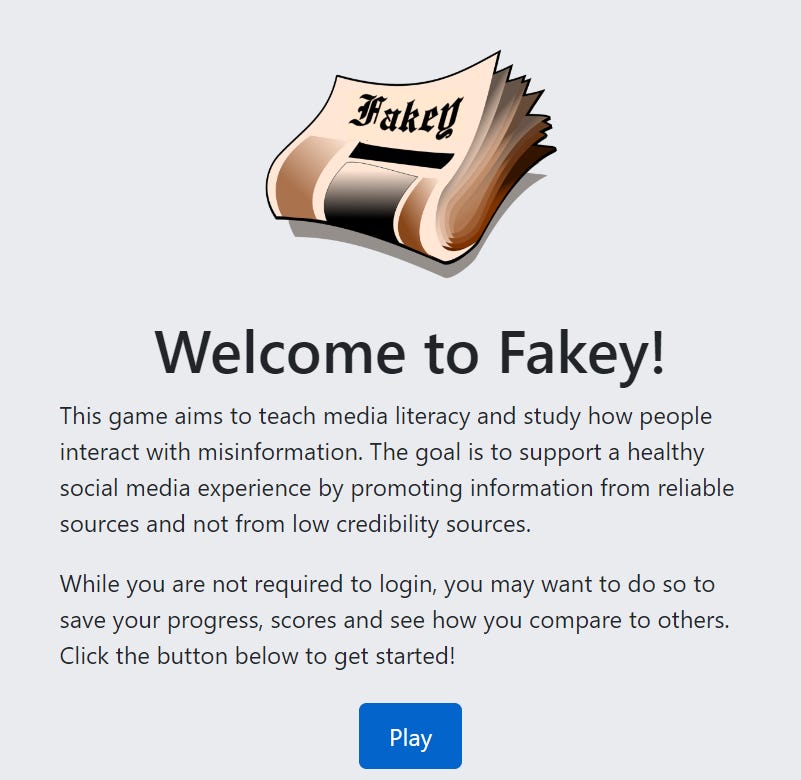#42 Info / Desinfo #MediaLiteracy&Disinformation. 6th of June 2024
Monthly bulletin on media literacy, disinformation and regulation from the Ukrainian editorial team
Hello!
Media literacy is a crucial component of modern society. It helps citizens navigate the information flow and recognize fake news.
In this bulletin, we will explore how media literacy levels are measured, why Finland is a leader in this field, how to assess media literacy objectively, and what game-based approaches for learning exist.
Pay attention to the new work of our incredible Roni Milovanova. Leave comments about her cover. She waits for it.
Illustrator: Roni Milovanova
What’s happening in the world?
On May 27-28, 2024, an event organized by Malta's Chairmanship of the OSCE, the OSCE Representative on Freedom of the Media, and the ODIHR will occur in Vienna. The event discussed the connection between media literacy and democracy, challenges and opportunities in the current information environment, and their impact on democratic participation. The conference gathered representatives from 57 OSCE participating states, international organizations, civil society, media, and other stakeholders.
How Media Literacy Levels Are Measured in Different Countries
Measuring media literacy levels in different countries involves comprehensive studies that consider several key aspects:
1. Critical Thinking Skills Assessment. Ability to analyze and evaluate the credibility of information.
2. Education Level. Availability and quality of media literacy educational programs.
3. Media Consumption. Culture of consuming information, including social media and traditional media.
4. Research and Surveys. Regular surveys of the population regarding their skills and attitudes towards information sources.
According to research published in MEDIA STUDIES, measuring media literacy encompasses several vital indicators. One of these is media knowledge, which involves understanding the role of media in society, including its structure and functions. Additionally, it includes analytical skills, which refer to the ability to critically evaluate media content, recognize biases, and detect manipulations.
Practical skills are also crucial, highlighting the ability to effectively use media for obtaining information and self-expression. Moreover, ethical aspects play a significant role in media literacy measurement, involving awareness of issues related to media use, such as privacy protection and adherence to copyright laws.
These indicators collectively provide a comprehensive assessment of an individual's media literacy.
Why Finland Ranks First in Media Literacy
Finland's media literacy success is the product of a comprehensive approach that integrates it into education and benefits from robust government support. Finnish children are taught in preschool to discern fact from fiction in media, laying the groundwork for critical thinking and analysis.
This early foundation evolves as students progress, engaging them in consuming and creating media content, thus empowering them as active participants in media discourse.
Central to Finland's achievements are collaborations between educational institutions, universities, and media organizations, which serve as incubators for innovative programs and initiatives. These partnerships foster an environment conducive to interdisciplinary learning and the development of high-quality media literacy resources.
Furthermore, Finland's government is pivotal in bolstering media literacy efforts through significant investments in research and educational initiatives. Institutions like the National Audiovisual Institute are tasked with implementing national media literacy policies, ensuring coherence and effectiveness across various stakeholders.
Drawing from Ross Nesbitt's, a cybersecurity expert’s, insights, Finland's approach to media education emphasizes critical inquiry and digital citizenship, fostering a culture where citizens can navigate the intricate web of media influences with resilience and discernment. By instilling these values early on and promoting a collaborative ecosystem of education and governance, Finland stands as a global exemplar in media literacy—an enduring testament to the transformative power of education in shaping resilient and informed societies.
How to learn media literacy while playing games
Site of Bad News Game.
Several innovative initiatives in media literacy leverage game-based approaches and artificial intelligence.
One notable project is the Bad News Game, an online platform to educate users about identifying fake news through simulated content creation scenarios.
Interface of the media literacy game Fakey. https://fakey.osome.iu.edu/
Another compelling example is Fakey, developed at Indiana University, which gamifies the process of recognizing and combating misinformation on social media platforms. Fakey lists the most popular 50 English-language sources from the Iffy Index of Unreliable Sources with either a 'low' or 'very-low' factual rating from Media Bias Fact Check.
Interface of the Google's Interland.
Google's Interland is an engaging online game that teaches children internet safety and critical thinking skills through interactive adventures. Kids can play their way to being Internet Awesome with Interland, an online adventure that puts the key lessons of digital safety into hands-on practice with four challenging games.
Global Media Literacy
Media literacy is indispensable in today's information-driven society, and Finland is a prime example of effectively integrating it into the education system. Assessing media literacy objectively demands a holistic approach. Moreover, innovative projects utilizing game-based techniques and artificial intelligence hold promise for elevating global media literacy standards.
Dear readers, this edition was our last release of the season. Summer is ahead. So, spend it with benefit and delight. Share our newsletter with your friends. Re-read previous articles, take our tests, look at illustrations of our Roni, and stay media literate! See you another time!
Editorial team: Kateryna Horska (Editor-in-chief), Anastasiia Kerpan (Head Editor), Roni Milovanova (Designer)
Un proyecto financiado por MICIU/AEI /10.13039/501100011033 y por la Unión Europea NextGenerationEU/ PRTR










